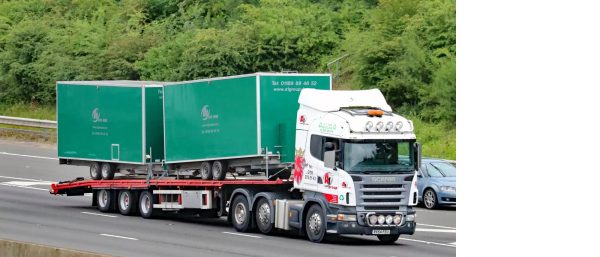Heavy vehicle testing restarted at Authorised Testing Facilities (ATFs) on 04 July 2020.
 As you know, the DVSA has been issuing certificates of temporary exemption (CTEs) to vehicles and trailers due for test.
As you know, the DVSA has been issuing certificates of temporary exemption (CTEs) to vehicles and trailers due for test.
Last week, the DVSA confirmed its longer-term plans to help manage testing demand:
• Exemptions will be in use until March 2021
• Vehicles and trailers which have not already received an exemption, will get a 3-month exemption
• 12-month exemptions will be given to certain operators, vehicles and trailers
ADR inspections
The Department for Transport has issued a waiver for annual ADR inspections on vehicles which have a
MOT (annual test) exemption.
This means the ADR inspection date for exempted vehicles moves forward to the new MOT test date.
What you need to do
If your vehicle is getting a 3 or 12-month MOT exemption, you must complete a declaration of compliance to ensure your journeys are covered by the waiver.
This should be done for each vehicle and before the ADR inspection expires.
If you are getting a longer exemption
If you have already completed declarations for vehicles which will now get a longer exemption, you do not need to take any action.
Transporting dangerous goods
To ensure your journeys are covered by the waiver, you must carry a copy of the following documents in the vehicle:
• Confirmation email
• Authorisation 945 issued by the Department for Transport
It is important that you continue to comply with the ADR requirements while the exemption is in force.
You must make sure:
• all required equipment and equipment for personal protection is carried on the vehicle and available to use
• the vehicle has the correct number and size of serviceable fire extinguishers – these should be easily accessible
• the driver carries the right documentation, including instructions in writing, transport documents and drivers’ training certificate
• all the required vehicle documents are in the vehicle
•
When the waiver process does not apply
You cannot get a waiver for:
• vehicles that have not got a valid exemption (3 or 12-months)
• a new non-type approved dangerous goods vehicle that is being put into service for the first time
• a vehicle where the details on the ADR1C document have changed – for example, a change of owner or the products it’s allowed to carry
Details of what you need to do can be found on the DVSA guidance page.


